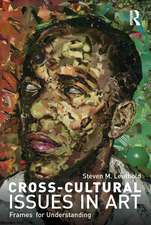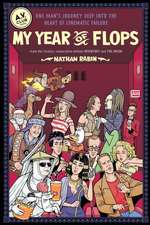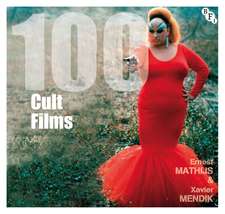Psycho Paths: Tracking the Serial Killer Through Contemporary American Film and Fiction
Autor Associate Professor Philip Simpson PhDen Limba Engleză Paperback – 20 oct 2000
Philip
L.
Simpsonprovides
an
original
and
broad
overview
of
the
evolving
serial
killer
genre
in
the
two
media
most
responsible
for
its
popularity:
literature
and
cinema
of
the
1980s
and
1990s.
The fictional serial killer, with a motiveless, highly individualized modus operandi, is the latest manifestation of the multiple murderers and homicidal maniacs that haunt American literature and, particularly, visual media such as cinema and television. Simpson theorizes that the serial killer genre results from a combination of earlier genre depictions of multiple murderers, inherited Gothic storytelling conventions, and threatening folkloric figures reworked over the years into a contemporary mythology of violence. Updated and repackaged for mass consumption, the Gothic villains, the monsters, the vampires, and the werewolves of the past have evolved into the fictional serial killer, who clearly reflects American cultural anxieties at the start of the twenty-first century.
Citing numerous sources, Simpson argues that serial killers’ recent popularity as genre monsters owes much to their pliability to any number of authorial ideological agendas from both the left and the right ends of the political spectrum. Serial killers in fiction are a kind of debased and traumatized visionary, whose murders privately and publicly re-empower them with a pseudo-divine aura in the contemporary political moment. The current fascination with serial killer narratives can thus be explained as the latest manifestation of the ongoing human fascination with tales of gruesome murders and mythic villains finding a receptive audience in a nation galvanized by the increasingly apocalyptic tension between the extremist philosophies of both the New Right and the anti-New Right.
Faced with a blizzard of works of varying quality dealing with the serial killer, Simpson has ruled out the catalog approach in this study in favor of in-depth an analysis of the best American work in the genre. He has chosen novels and films that have at least some degree of public name-recognition or notoriety, includingRed DragonandThe Silence of the Lambsby Thomas Harris,Manhunterdirected by Michael Mann,Henry: Portrait of a Serial Killerdirected by John McNaughton,Sevendirected by David Fincher,Natural Born Killersdirected by Oliver Stone,Zombieby Joyce Carol Oates, andAmerican Psychoby Bret Easton Ellis.
The fictional serial killer, with a motiveless, highly individualized modus operandi, is the latest manifestation of the multiple murderers and homicidal maniacs that haunt American literature and, particularly, visual media such as cinema and television. Simpson theorizes that the serial killer genre results from a combination of earlier genre depictions of multiple murderers, inherited Gothic storytelling conventions, and threatening folkloric figures reworked over the years into a contemporary mythology of violence. Updated and repackaged for mass consumption, the Gothic villains, the monsters, the vampires, and the werewolves of the past have evolved into the fictional serial killer, who clearly reflects American cultural anxieties at the start of the twenty-first century.
Citing numerous sources, Simpson argues that serial killers’ recent popularity as genre monsters owes much to their pliability to any number of authorial ideological agendas from both the left and the right ends of the political spectrum. Serial killers in fiction are a kind of debased and traumatized visionary, whose murders privately and publicly re-empower them with a pseudo-divine aura in the contemporary political moment. The current fascination with serial killer narratives can thus be explained as the latest manifestation of the ongoing human fascination with tales of gruesome murders and mythic villains finding a receptive audience in a nation galvanized by the increasingly apocalyptic tension between the extremist philosophies of both the New Right and the anti-New Right.
Faced with a blizzard of works of varying quality dealing with the serial killer, Simpson has ruled out the catalog approach in this study in favor of in-depth an analysis of the best American work in the genre. He has chosen novels and films that have at least some degree of public name-recognition or notoriety, includingRed DragonandThe Silence of the Lambsby Thomas Harris,Manhunterdirected by Michael Mann,Henry: Portrait of a Serial Killerdirected by John McNaughton,Sevendirected by David Fincher,Natural Born Killersdirected by Oliver Stone,Zombieby Joyce Carol Oates, andAmerican Psychoby Bret Easton Ellis.
Preț: 339.71 lei
Nou
Puncte Express: 510
Preț estimativ în valută:
65.06€ • 67.03$ • 54.50£
65.06€ • 67.03$ • 54.50£
Carte disponibilă
Livrare economică 03-17 februarie
Livrare express 17-23 ianuarie pentru 30.58 lei
Preluare comenzi: 021 569.72.76
Specificații
ISBN-13: 9780809323296
ISBN-10: 080932329X
Pagini: 264
Dimensiuni: 152 x 229 x 20 mm
Greutate: 0.4 kg
Ediția:1st Edition
Editura: Southern Illinois University Press
Colecția Southern Illinois University Press
ISBN-10: 080932329X
Pagini: 264
Dimensiuni: 152 x 229 x 20 mm
Greutate: 0.4 kg
Ediția:1st Edition
Editura: Southern Illinois University Press
Colecția Southern Illinois University Press
Recenzii
"Simpson
provides
us
with
an
original
discussion
of
a
variety
of
serial
killers
texts,
and
a
close
examination
of
their
functions
within
the
genre.”—Richard
Tithecott,
author
ofOf
Men
and
Monsters:
Jeffrey
Dahmer
and
the
Construction
of
the
Serial
Killer
“Tracking
the
best
known
U.S.
serial
killer
novels
and
films
of
the
1970s,
‘80s,
and
‘90s,
Simpson
places
the
genre
in
the
long
Gothic
tradition
but
focuses
on
the
qualities
associated
with
serial
killers.
He
finds
that
serial
killer
narratives
reflect
some
of
the
movements
of
those
decades
in
the
culture:
feminism,
the
romance
genre,
and
the
new
right.
In
this
world,
the
malevolent
lurks
in
the
everyday.
.
.
.
The
best
introduction
for
the
scholar
beginning
study
of
this
narrow
genre.
.
.” —Choice
Notă biografică
Philip
L.
Simpsonis
an
assistant
professor
of
communications
and
humanities
at
the
Palm
Bay
campus
of
Brevard
Community
College,
Palm
Bay
Florida.














